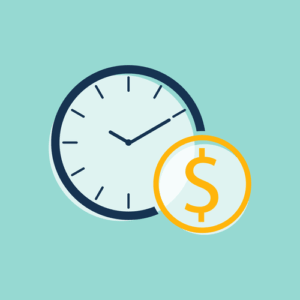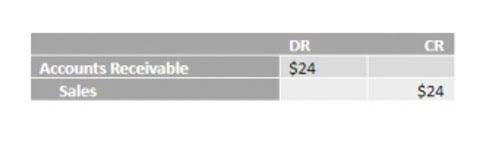Calculating Cost of Debt: YTM and Debt-Rating Approach

When analyzing the cost of debt, it is crucial to understand the various assumptions and challenges that come with it. This section aims to provide insights from different perspectives and shed light on the complexities involved. Running a construction business often means managing unpredictable cash flow while… In this example, the cost of debt for Company XYZ is determined to be 0.75%.
How to calculate the cost of debt using the interest rate, tax rate, and market value of debt?

The cost of debt formula provides insights into the financial impact of debt on a company. Understanding the pre-tax and after-tax cost of debt is crucial for making accurate debt financing decisions. The Weighted Average Cost of Capital (WACC) tells you the return a company pays for the equity and debt capital that finance its assets, in proportion to each source of capital. To calculate the WACC you need the cost of equity, cost of debt, the proportions of equity and debt in the total value of the company, and the corporate tax rate. In closing, the discount rate (or cost of capital) of our hypothetical company comes out to 8.6%, which is the implied rate used to discount its future cash flows.
Discount Rate Calculation Example
- This means that the company pays an annual interest rate of 4.5% on its debt.
- Debt financing usually offers tax benefits, as the interest paid on the debt is tax-deductible.
- In this article, I will show you how to calculate and interpret the cost of debt for a company.
- The cost of debt formula is a useful tool for measuring and managing your debt.
The cost of debt and the cost of equity should reflect the current market conditions and the risk level of the business. One of the most important concepts in corporate finance is the weighted average cost of capital (WACC). WACC is the average rate of return that a company must pay to its investors for using their capital. It reflects the opportunity cost of investing in the company, as well as the riskiness of its projects. WACC is used to evaluate the profitability and feasibility of new investments, as well as to determine the optimal capital structure for the company.
- Next, we’ll calculate the interest rate using a slightly more complex formula in Excel.
- For the next section of our modeling exercise, we’ll calculate the cost of debt but in a more visually illustrative format.
- Firms should choose the debt level that minimizes their WACC and maximizes their value.
- To calculate the cost of debt, the formula involves multiplying the interest rate by (1 – tax rate).
- YTM aligns with fair value measurement practices under International Financial Reporting Standards (IFRS) or Generally Accepted Accounting Principles (GAAP).
Can you explain the after-tax formula for calculating the cost of debt?

However the relatively small weight of the warrant in the overall convertible leaves the convertible still costing less than equity. Higher interest rates can increase the financial risk for a business, affecting its profitability and long-term viability. By factoring in short-term and long-term obligations separately and then combining them using appropriate weights, businesses arrive at a comprehensive understanding of their actual cost of how to find cost of debt debt. This enables them to make strategic decisions regarding future financing or refinancing options.

- By understanding the cost of debt, companies can assess the expense of their borrowing, compare it to other financing options, and make informed financial decisions.
- In our table, we have listed the two cash inflows and outflows from the perspective of the lender, since we’re calculating the YTM from their viewpoint.
- The discount rate formula divides the future value (FV) of a cash flow by its present value (PV), raises the result to the reciprocal of the number of periods, and subtracts by one.
- By following the steps outlined in this guide and considering real-life examples and best practices, you can make informed decisions regarding your debt financing and optimize your overall capital structure.
- While it eliminates repayment obligations, the long-term cost of equity is often higher due to investors’ expectations for significant returns.
- Specifically, the cost of debt might change if market rates change or if the company’s credit profile changes.
Additionally, collaboration and synchronization can be problematic if you work as part of a team. By using Layer, you’ll have fully synchronized data and complete control over access. You can schedule updates and contra asset account automate processes to save time and minimize errors, as well as automatically share reports with interested parties. The Excel GROWTH function returns the predicted exponential growth for your data set. On the Bloomberg terminal, the quoted yield refers to a variation of yield-to-maturity (YTM) called the “bond equivalent yield” (or BEY).
- Lots of debt will also reduce the total cost of capital (up to a certain point).
- Where the market price is not available, yield to maturity cannot be worked out but a relative approach can be used to estimate cost of debt.
- Remember that the interest expense on the income statement represents the total interest paid for both debt and leases.
- Making timely payments and reducing outstanding debt can enhance your creditworthiness, securing more favorable borrowing terms.
- For example, an increase in the federal funds rate typically raises borrowing costs for businesses.
- Prevailing interest rates are set by market conditions, and they are strongly influenced by national monetary policies.
Central banks, such as the Federal Reserve, set benchmark rates that influence borrowing costs. For example, an increase in the federal funds rate typically raises borrowing costs for businesses. In the calculation of the weighted average cost of capital (WACC), the formula uses the “after-tax” cost of debt.
Cost of Debt vs. Cost of Equity
The capital asset pricing model (CAPM) is the standard method used to calculate the cost of equity. Thereby, an unlevered DCF projects a company’s FCFF, which is discounted real estate cash flow by WACC – whereas a levered DCF forecasts a company’s FCFE and uses the cost of equity as the discount rate. Selecting an accurate discount rate is vital for precise valuations, but it often depends on subjective estimates that can lead to inconsistencies. Artificial intelligence enhances this process by analyzing vast datasets, including historical market trends, comparable company metrics, and macroeconomic indicators. Once all the cash flows are discounted to the present date, the sum of all the discounted future cash flows represents the implied intrinsic value of an investment, most often a public company.
